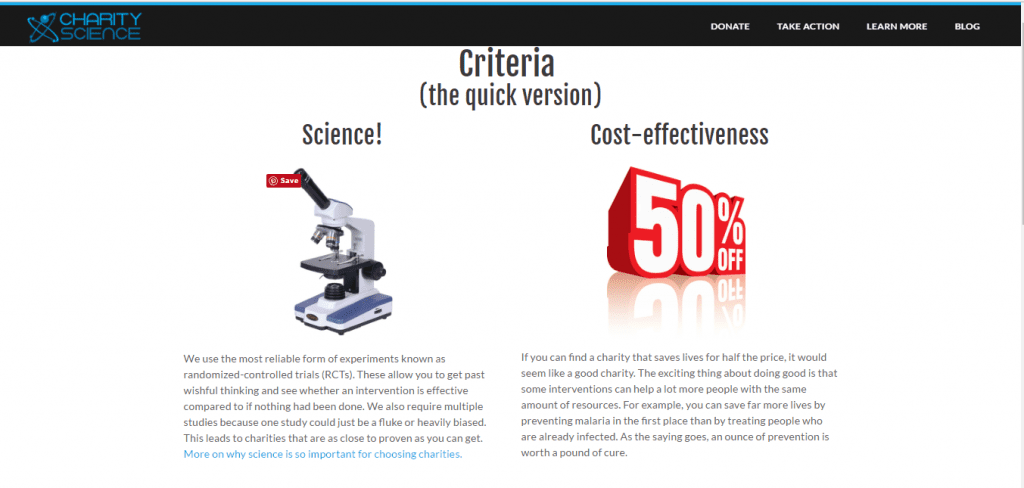These days, I’m talking about nonprofits all the time. Learning about and sharing the awesome things that CauseVox customers are doing is turning me into a one-woman nonprofit promoter. I am the Charity Navigator of my group of friends. I think the work you do deserves a parade, and I just can’t stop talking about it. Since I can’t personally reach out to everyone on earth, or actually throw you a parade, you’re going to need a nonprofit marketing plan to help you get the word out about all the great work you’re doing.
What is Nonprofit Marketing?
As a nonprofit professional, does the word “marketing” make you a little nervous? If so, I get it. Marketing can sound too corporate, too much like empty business-speech. After all, we’re talking about changing the world, not selling widgets.
As defined by the American Marketing Association:
“Marketing is the activity, set of institutions, and processes for creating, communicating, delivering, and exchanging offerings that have value for customers, clients, partners, and society at large.”
Nonprofits certainly fit this description, having many offerings of value to partners and society at large. Marketing is simply how we communicate those offerings. We engage donors and supporters by telling stories about the work we do, and how we’re changing the world.
Before I dive into the ins and outs of crafting a nonprofit marketing plan, let’s take a look at the two camps of marketing techniques – inbound and outbound marketing.
Inbound Marketing Techniques for Nonprofits

Inbound marketing revolves around creating targeted content that organically attracts people to your organization. Simply put, inbound marketing is when people come to you first. It’s passive marketing with the goal of pulling in traffic to your website and converting visitors to donors, volunteers, and more.
SEO and Content Writing
When it comes to inbound marketing techniques, search engine optimization (SEO) and content writing is usually the first thing that comes to mind. It’s a way to build sustainable traffic to your website and promote brand visibility in search engine results. SEO is an ongoing task – there’s a lot that goes into creating an organic search footprint – but when properly optimized, your content will be more attractive to a search engine, making it more likely that your page will rank higher for terms and phrases related to your cause.
Email Marketing
Another popular inbound marketing tactic is email marketing. Email marketing is a great way to communicate with existing supporters, connect with new ones, and drive donations. When built in as part of your overall nonprofit marketing plan, email marketing is extremely effective at reaching new audiences.
Social Media Ads and Groups
With the world shifting rapidly towards digital, nonprofits should look at spreading their message online through targeted ad spend. As an inexpensive and versatile medium, social media ads can help you connect with your target audience by delivering highly personalized ad campaigns across various social platforms such as Facebook, Instagram, Twitter, and more.
Alternatively, you can use social media groups to help you engage with like-minded individuals and build relationships. By searching for and joining groups relevant to your nonprofit, you can connect with others who are also passionate about your cause.
Outbound Marketing Techniques for Nonprofits

In contrast to inbound marketing, outbound marketing centers on proactively reaching out to a broad audience who may not already know who you are. Also known as push-marketing, outbound marketing leverages traditional methods to push your message out to people in hopes of getting them interested in your cause.
Cold Calling
Cold calling is a prime example of outbound marketing. This technique focuses on reaching out to individuals you don’t yet already have an existing relationship with. While some may consider cold calling a relic of the past, when used as part of a larger nonprofit marketing plan, cold calling can be effective for reaching new supporters.
Asking Donors for Referrals
Another way to source new prospects is to ask your existing donors for referrals. Have a one-on-one conversation with an existing donor and see who else might be interested in your cause. It’s a great way for an existing donor to do a warm introduction for their friends and coworkers to your organization. After all, warm handoffs are always easier and less awkward than a cold reach.
Attending Conferences & Events
Sometimes to make new connections, you have to put on your hard pants and get out of the office. Seek out conferences and events that are within your nonprofit’s field and put yourself in the same room as people who care about your cause. Come prepared with your elevator pitch and be prepared to network like a pro. Be sure to follow-up with every new lead and add them to your CRM after the event is over.
Press Releases
Press releases are an important and inexpensive media tool for increasing exposure and knowledge of your nonprofit to the wider community. They are used to communicate updates and information about your nonprofit and ideally further prompt media outlets and individuals to reach out to learn more.
How to Create a Nonprofit Marketing Plan
Giving yourself a road map for your marketing efforts helps ensure you’re connecting with the right people and communicating the message you want to. At its simplest, a nonprofit marketing plan is a guide to the messages you want to share and the way you intend to share them.
While you will often be marketing your fundraising efforts, your nonprofit marketing plan is distinct from your fundraising plan. Your marketing plan encompasses all the stories you’ll need to tell your audiences, and in addition to fundraising, can include:
- Raising awareness
- Calls for volunteers
- Educational messages
Even when your marketing efforts are not fundraising directly, they still have an impact on your bottom line. People can’t donate to something they don’t know exists.
So you need a plan, but it doesn’t need to be fancy. You don’t necessarily need to conduct a bunch of market research or spell out every minute detail. Your plan can be as flexible or as in-depth as you want it to be. It is meant to be a working document.
To make your nonprofit marketing plan complete, include these five elements.
1. Define Your Nonprofit Marketing Plan Goals
At the crux of your nonprofit marketing plan, you need to determine what your goals are. Without a goal, your marketing plan is like a ship without a rudder. Whether you’re promoting general brand awareness, raising funds, or engaging volunteers, every nonprofit marketing plan needs a concrete target to be successful.
2. Understand Your Audiences
As a nonprofit, you’re likely targeting and communicating with different groups: donors, volunteers, staff, etc. It’s crucial to define and understand each of these audiences and adjust your messaging based on who you’re talking to. To truly get a sense of who your audience is and make informed marketing decisions, you may want to dig beyond the basics and learn about their preferences and interests.
3. Craft Key Messages for Your Nonprofit Marketing Plan
Crafting key messages ensures that no matter who is marketing, the overall messaging will stay consistent. Pulling from the different aforementioned audiences, here’s an example of a key message for different audiences.
Key Message: We are committed to making sure that families in our community have adequate access to healthy, nutritious meals through advocacy, education, and programming.
- For volunteers: We are committed to making sure that families in our community have adequate access to healthy, nutritious meals through food drives.
- For donors: You can help us ensure that every family in our community has adequate access to meals by donating to support advocacy, education, and programming.
When it comes to key messages, it’s all about how you say it.
4. Choose, Plan, and Create Your Nonprofit Marketing Plan Strategies
Now that you’ve taken the time to define your goals, understand your audience, and craft your key messages, it’s time to choose, plan, and create your marketing strategies. What medium are you going to use to get your message out? What content format do you want to use? Do you have a preference between traditional vs digital?
5. Analyze Your Nonprofit Marketing Plan Performance
An effective nonprofit marketing plan requires you to try different things until you find what works best for you. It’s extremely rare that you’ll hit the nail on the head on the first try. Regularly analyzing your marketing performance will help you determine what’s working and what’s not. If this is your first time dabbling in nonprofit marketing, use this as an opportunity to establish a baseline for future comparison.
Note: Just because something didn’t work doesn’t mean you have to bin it outright. Instead, you might only need to edit certain components to get better results. If you’re tweaking your marketing plan, we recommend focusing on changing one thing at a time to avoid getting overwhelmed.
Nonprofit Marketing Plan Best Practices

1. Determine Your Goal
Too often, we market without a specific goal. What do you want your marketing to accomplish? Is it increasing overall traffic on your website? Gaining more followers on social media? An uptick in donations? A certain number of new volunteers recruited?
Whatever your goal, we recommend you follow the SMART approach – strategic, measurable, attainable, realistic, and time-bound.
- Strategic: What are you trying to accomplish? How and why will it be accomplished?
- Measurable: How will you measure if you’ve hit your goal? How will you measure the success of your marketing campaigns?
- Achievable: Is it possible? Do you have the necessary skills and resources to accomplish the goal? Are you tackling this alone or will you have a team ready to help out?
- Realistic: Is your goal aligned with your mission and overall objectives?
- Time Bound: When do you expect to complete the project?
In addition to a goal, you’ll need a way to measure if you’re hitting it. This may be as simple as, “I will record the number of Facebook followers we have on the first day of each month for four months,” or an involved process of surveying new donors, or creating “how’d you hear about us?” options for all your sign-up pages.
2. Determine Your Audience
Who are you trying to reach? It’s tempting to say, “everyone,” but the more specific you can be about your audiences, the better. You will probably find you have a few target audiences; potential donors, existing donors, and prospective volunteers are distinct audiences that you’ll want to approach differently.
Just like you wouldn’t explain something in the exact same way to your best friend, your six year-old nephew, and your grandfather, you aren’t going to communicate your message in the exact same way to each of your audiences.
To figure out how to approach your different audiences, start thinking about what you already know about them. (This is where market research would come in, if we wanted to get deeply into it, but you probably already know enough about these audiences to get started.) Consider what:
- Phase of life are they in?
- Motivates them to care about what you do?
- Do they already know about your work?
- Are their communication preferences?
Create an Audience Persona
It’s often useful to create a persona for each audience, so you can picture your marketing landing on a real human. For example, let’s say I’ve identified prospective volunteers as a distinct audience. I’ll write up a description of “Jessica,” my imaginary prospective volunteer:
Jessica is in her late twenties, college-educated. She was probably involved in volunteering in high school and college, but fell out of the habit while she was establishing her career. Now that she feels more like a stable adult, she’s looking for opportunities to give back. She wants to feel like she’s contributing to something bigger and make a personal connection to the cause.
Jessica is hesitant to make a monthly or weekly commitment. She values flexibility, and would like to meet other people her age while volunteering.
Now, when I’m crafting messages to prospective volunteers, I’m not aiming at “anyone,” I’m thinking about Jessica. I’m going to highlight flexible volunteering opportunities with the potential for group work with people her age, and I’m going to focus on “making a difference and giving back” in my language.
As you think about these audiences, you may identify that some may be itching to get more involved with your cause. For these folks, you’ll want to provide opportunities for them to do something. Peer-to-peer fundraising isn’t just a great way to expand your network and raise funds, it’s a good way to give supporters a concrete, hands-on way to help.
We know “create a bunch of peer-to-peer fundraising tools” isn’t exactly at the top of your marketing priorities, so at CauseVox, we take care of this for you. We build peer-to-peer fundraising tools your supporters can easily use to share your cause with their community or facilitate fundraising events like races or challenge fundraisers.
3. Determine Messages To Be Communicated
In the nonprofit world, we’re generally averse to the idea that we’re “selling” anything, but in a sense that’s exactly what we’re doing. In nonprofit marketing terms, the product you’re offering your audience is a story.
This is actually pretty cool, because unlike widgets, stories can change the world. Storytelling is an essential human behavior that connects us to each other and engages us with ideas. Stories are where it’s at, and nonprofits are uniquely positioned to tell great ones. With some time and creativity, every nonprofit can make genuine human connections through the power of storytelling.
That’s why CauseVox has built our fundraising platform to be centered on telling stories and connecting with your supporters. We want to put your stories at the heart of your marketing.
Just like your audience can’t be “everyone” your story can’t be “everything.” While your overarching narrative will remain the same, you must tailor your individual messages to your audiences, emphasizing the things that will mean the most to them.
These days, visual storytelling is one of the most effective tools for rallying support. When it comes to fundraising, on CauseVox alone, 80% of the highest-grossing campaigns have used video as part of their fundraising campaign. In fact, 57% of people who watch nonprofit videos go on to make a donation.
4. Points Of Distinction
What makes the work you do distinct from other work? Do you have special initiatives or socially innovative programs? What makes your cause different from other causes? In business we’d call this “setting yourself apart from the competition,” but you can consider it “demonstrating how we’re special,” if that feels less cutthroat.
With over 1.5 million registered nonprofit organizations in the United States alone, there’s no shortage of causes for your audience to pay attention to. To really reel in your audience and stand up above the crowd, include any unique factors of your work or organization that will help draw their focus.

5. Create a Style Guide for Consistent Branding
A style guide is an absolute must if you want communication and content that goes out to be clear, cohesive, and consistent. In a nutshell, a style guide keeps your brand identity uniform whether you have multiple people developing content or you’ve hired it out to a third-party.
When it comes to your organization’s style, what do you most need to guide? If you aren’t sure, here are a few places to start:
- Voice: If you picture your nonprofit as a person, how would they speak? How formal (or casual) should they sound? What style of conversation is appropriate for your organization?
- Visual elements: What are the visual elements that represent your organization? I’m referring to things such as your color palette, images, fonts, and logos.
- Language: Create a list of acceptable terms you want to use along with accepted spellings. Regardless of the number of people who speak on behalf of your organization, it should always sound like one entity.
- Style: While we’re not referring to choosing between various citation styles, you do need to note how you punctuate and abbreviate.
6. Put Together a Promotions Budget
Sometimes, marketing costs money. As the adage goes, “You need to spend money to make money”.
Including a budget in your plan, even if it’s a small amount, will help you determine what kind of marketing activities you can feasibly do. Depending on your goal, you may want to include things like the cost of software, graphic design tools, ad spend, social media scheduling, printing, and third-party contractors in your budget. Of course, there’s no need to reinvent the wheel when you’re creating a marketing budget. There’s tons of customizable templates already out there. If you’re wondering where to start, Hubspot offers free templates you can personalize to create a marketing budget that fits your needs.
7. Choose Your Avenues for Promotion
This is where you really get into the nitty-gritty of how your plan will work. Where and how will you communicate your story and points of distinction to your audiences?
Options include:
| Channel Type | Channel Outlets |
| Web | Your fundraising website, organization website, other websites like community calendars or volunteer networks, and perhaps most importantly, your email list. |
| Social Media | Facebook, X, TikTok, LinkedIn, Instagram, Pinterest, etc. |
| Traditional Media | Newspaper, television, radio, magazines. |
| Printed Materials | Brochures, posters, direct mail, hand-outs, flyers, billboards, signage. |
| In Person | Presentations, conversations, speeches, events. |
After you’ve determined where your messages will appear, it’s time to decide when and how to communicate them. Options include:
- A monthly email newsletter
- Stories and pictures on your website every quarter
- Regular social media posts three times a week
- A new program brochure this year
- Pitching your story to the media four times a year
- Distribute a radio PSAs each quarter
8. Give Your Team Members Specific Roles
Once you’ve chosen what platforms you want your content to show up on, make a list of all the roles and responsibilities needed and delegate who’s going to do what. Be sure to assign soft and/or hard deadlines. Depending on the size of your marketing team, each member’s strengths and skill sets, and what tasks take priority, various roles and tasks can be organized in a number of ways. There’s no right or wrong way to define roles as long as you’re clear about each individual’s responsibilities and deadlines.
9. Put Your Nonprofit Marketing Plan Into Action
Now that you’ve solidified your nonprofit marketing plan, you and your team should refer to it frequently. Use it as a guide to ensure that you’re on track, meeting deadlines, and staying within budget. As you tackle your marketing campaigns, your marketing plan will help keep your team focused and organized.
10. Evaluate Results for Next Year
Before you wrap up your marketing plan for the year, it’s crucial to evaluate your results. This means taking a look at whether you made progress toward your current goals, assessing what you did well and what could be improved, and noting any lessons learned. Based on your evaluation, this will help you tweak your existing nonprofit marketing plan and set new goals for next year.
Shout It From The Rooftops
With a nonprofit marketing plan in place, you’ll be able to approach your marketing efforts methodically and thoroughly as you spread the word about the good work you do, making it seen, supported, and shared.
We’re excited about the amazing work you do and we guarantee that others will be too.
This post was originally published in July 2017 and has been updated in January 2024 for freshness, accuracy, and comprehensiveness.
If You Enjoyed This Post, You May Like:
- The Donor Engagement And Retention Playbook
- The Complete Guide To Email Marketing For Nonprofits
- 7 Options To Distribute And Market Nonprofit Content
- Fundraising vs. Marketing: What’s The Difference?
- The Great Convergence: Digital Marketing For Nonprofit Fundraisers
Editor's Picks
Ultimate Guide To Peer-to-Peer Fundraising
Customer Story: Spur Local Raises Over $1M With Their Give Local Campaign
Fundraising Strategies for Nonprofits: Craft the Best Approach for Your Organization
Create a Killer Fundraising Plan - Best Practices, Strategies, & Downloadable Template



